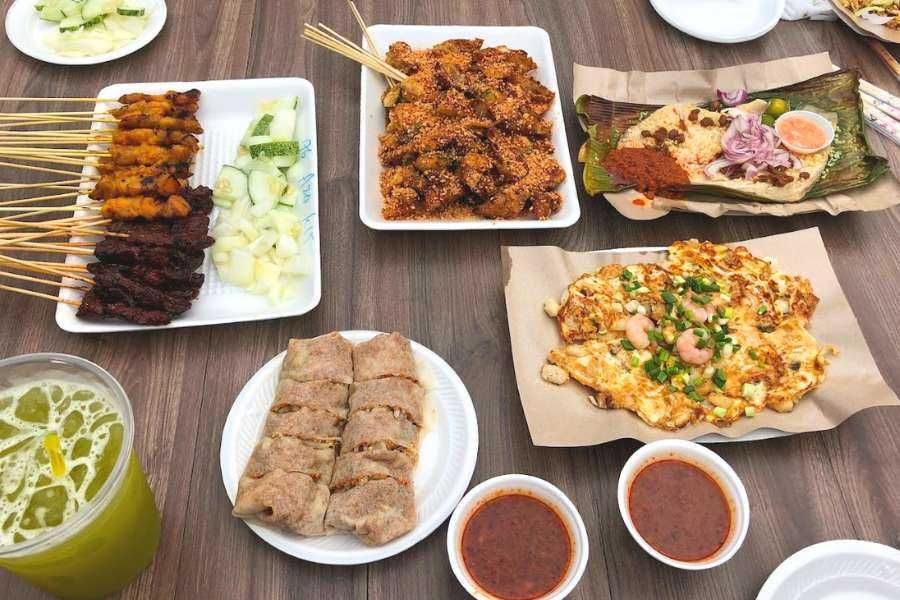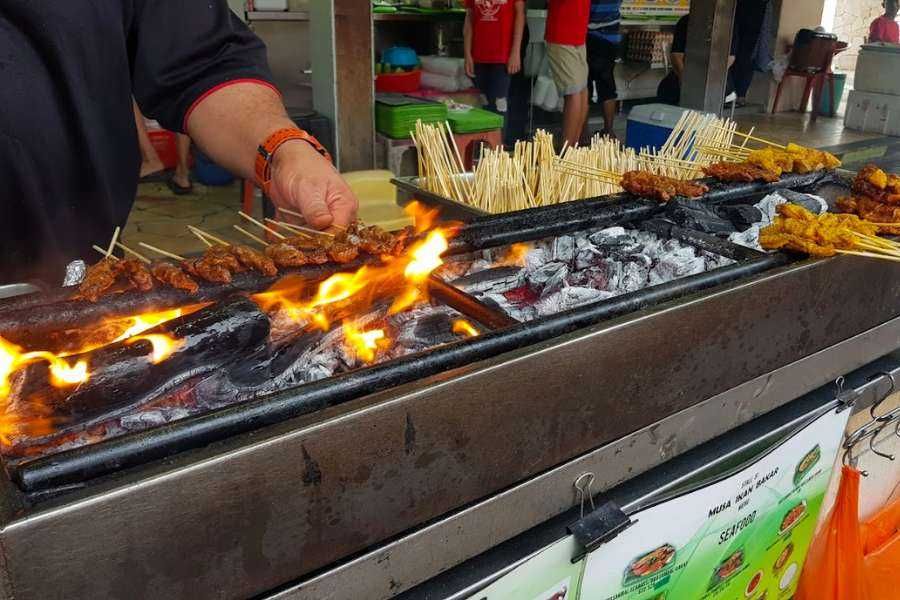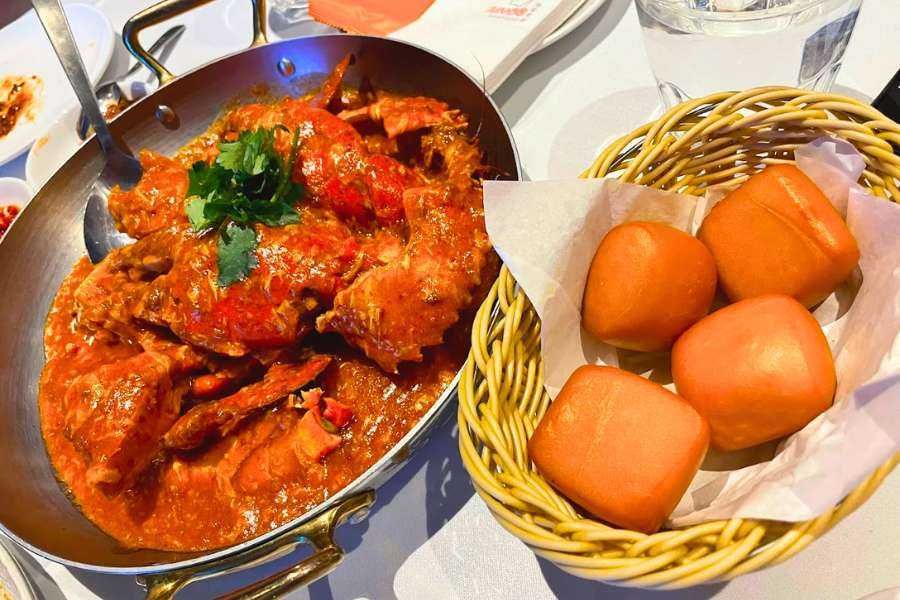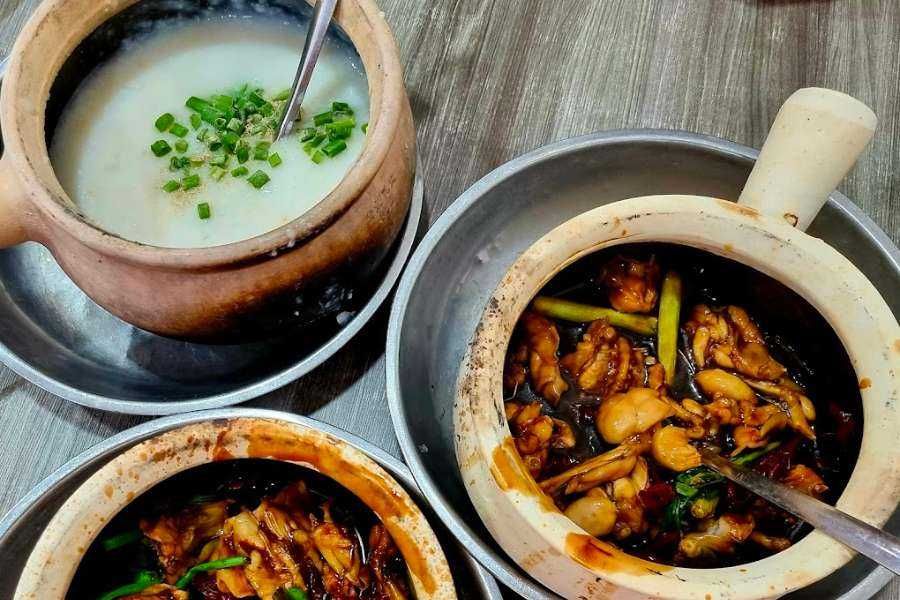Food and Hawker Culture in Singapore
Singaporean food is more than a meal, it's a sensory journey through a melting pot of cultures, each contributing a unique flavor, spice, and technique to the culinary masterpiece that is Singaporean cuisine. What sets hawker culture apart is not just affordability but the sheer excellence that emerges from humble stalls. Here, culinary brilliance is not confined to high-end establishments but thrives in the hands of hawkers who have perfected their craft, passing down traditions through generations.
Food is a cultural expression deeply rooted in diverse ethnicities. Chinese, Malay, Indian, and Peranakan, each group brings its unique customs and etiquette to the dining table.
For instance, in Chinese culture, communal dining and the sharing of dishes symbolize harmony and togetherness. Malay cuisine often involves the use of hands, reflecting a communal and familial approach to dining. Indian dining etiquette emphasizes the balance of flavors on the plate and may include the use of bread or hands for consuming certain dishes. Peranakan customs showcase intricate culinary rituals, often associated with celebrations and familial gatherings.
What makes Chinese cuisine unique is the skill in its preparation, incorporating methods like stir-frying, steaming, and the use of aromatic sauces to craft a one-of-a-kind culinary adventure. Malay cuisine, on the other hand, relies on a rich blend of spices and herbs, including lemongrass, galangal, and turmeric, resulting in fragrant dishes.
In Indian cuisine, influenced by India, a distinct smoky flavor arises from the use of tandoor ovens. For those seeking vegetarian options, dining in Singapore is a breeze, especially among Indian cuisine, as a variety of vegetarian dishes are readily available.
In 2020, Singapore's hawker culture gained global acclaim, earning a spot on UNESCO's Representative List of the Intangible Cultural Heritage of Humanity. This recognition marked a historic milestone, extending to Michelin Guide inclusion for hawker stalls traditionally reserved for fine dining. UNESCO's acknowledgment emphasizes the tireless efforts of generations of hawkers in preserving accessible culinary traditions. The inclusivity, affordability, and excellence in hawker centers embody the spirit of Singaporean gastronomy, becoming a transcendent cultural heritage.

Must-try dishes
In our top selection of must-try dishes in Singapore is chili crab. You can find this dish in seafood restaurants or local 'zi char' establishments. The original creation of chili crab did not include beaten eggs. However, the chili crab commonly served now includes beaten eggs to enhance its flavor. If your chili crab doesn't come with mantou (fried/steamed buns), we highly recommend ordering it as a side dish. When you dip mantou into the chili crab sauce, flavors explode with every bite. The sauce maintains a perfect balance between spicy and sweet chili. The taste might not reveal itself on the first bite. The more you eat and lick your fingers and the shells, the more addictive it becomes. Apart from the iconic chili crab, black pepper crab and salted egg crab are also popular among locals.
Hainanese chicken rice has earned its place in the Michelin Guide, and you shouldn't miss experiencing its delightful fragrance. It's a local staple, known for its perfect blend of savory warm rice and beautiful aromatic essence. The dish features tender and juicy chicken paired with fragrant rice cooked with a ginger-garlic mixture and a hint of pandan leaf. Don't forget to enjoy it with the accompanying dipping chili sauce, which takes the flavors to a whole new level.
Comparing it to other rice dishes is an understatement, it stands out on its own. While adding a braised hard-boiled egg is optional, it enhances the overall flavor. Considered a local favorite, Hainanese chicken rice is a must-try dish.
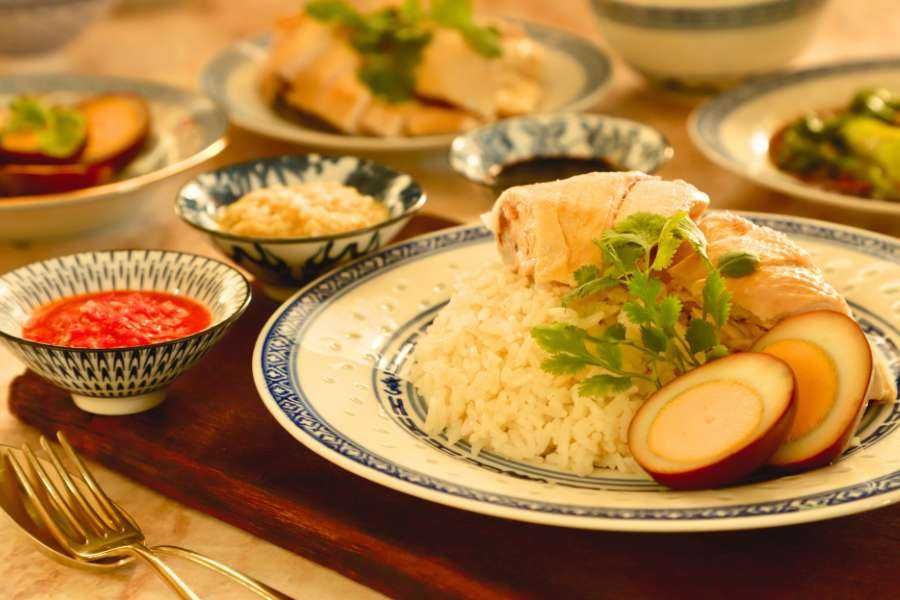
Another well-known dish among locals is frog porridge. It is cooked in different unique sauces such as gong bao, chicken essence, garlic & white pepper, and a special homemade chili. The frog are cooked in a clay pot and served while steaming hot. This dish is paired with porridge cooked in earthen pots. We recommend trying the dried chili sweet-savory sticky gong bao sauce, best drizzled over thick, smooth porridge.
For those who haven’t tried frog, it tastes like chicken but is more tender and softer. If you cannot handle spicy food, you can request it non-spicy and still enjoy the flavorful frog porridge.
If you're craving something light, we recommend trying kaya toast. It's made with sweet coconut egg jam generously spread on toasted bread. This local favorite serves as a convenient and speedy breakfast option. Pair it with a cup of kopi (coffee). With a variety of coffee types in Singapore, make sure you're familiar with the names to not mix up your coffee order.
Don't forget the half-boiled eggs with a dash of black soya sauce for an extra kick. For added flavor, try dipping your kaya toast into the half-boiled eggs. It might sound unusual initially, but you might discover a new and enjoyable taste in the unique food combinations Singapore has to offer!
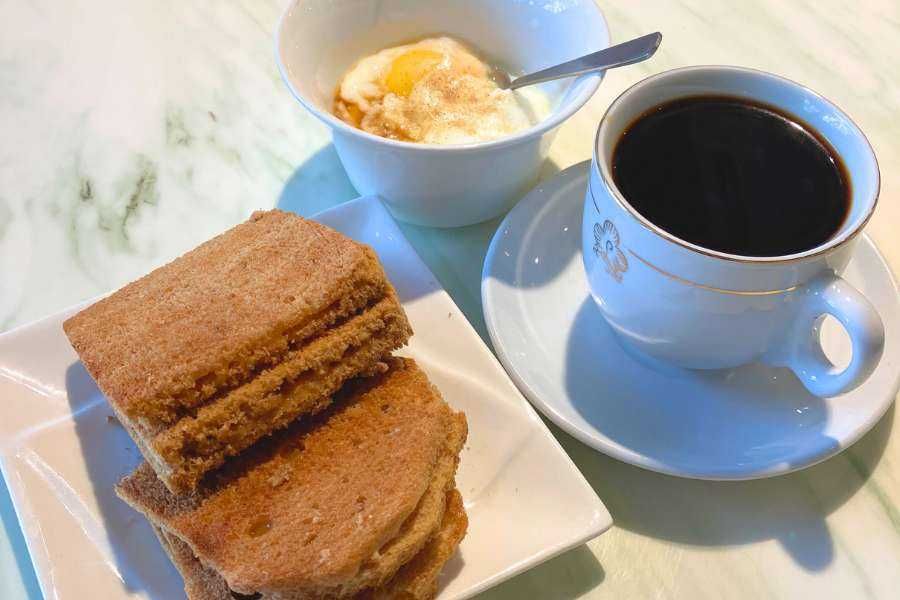
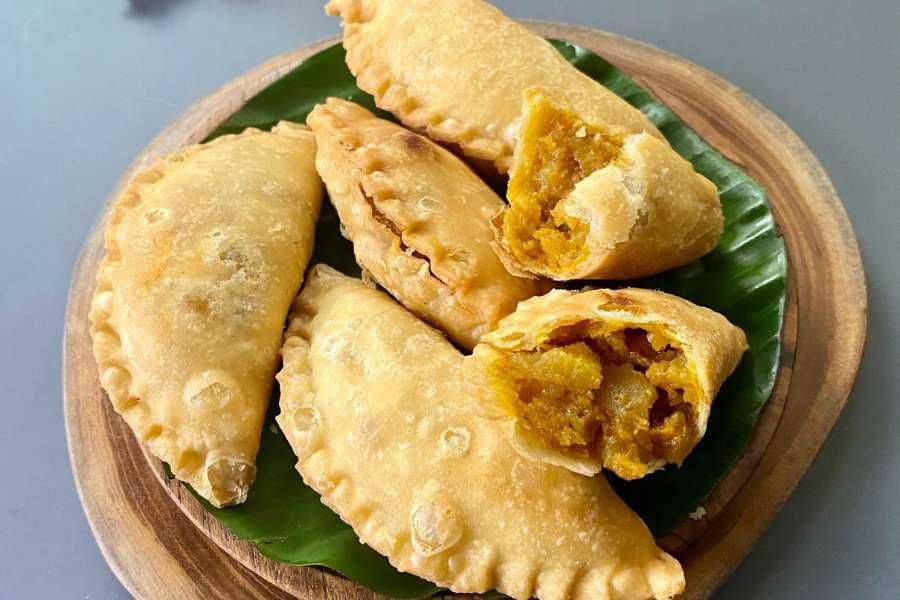
Read: Peranakan Cuisine
Another Singaporean favorite, not widely known to the world, is the curry puff (Malay epok epok or Indian karipap). It often boasts generous fillings and a flaky, layered crust. Some puffs aren't overly flaky to prevent a mess while eating. This crispy delight comes with various fillings for you to choose from, including common ones like curry puff (curry, potato, and eggs), chicken puff (chicken and vegetables), and sardine (sardine and onions).
Don't stick to just one filling, exploring all the options will help you discover your favorite as you savor these puffs. They are infused with fragrant and aromatic flavors that melt instantly as you take a bite. If you get the chance to try the iconic combination of chili crab in a puff, you must seize it. It is one of the best culinary fusions you can find!
Beyond bread, you should definitely try roti prata (flaky Indian bread)! You can have it plain or with various toppings of your choice, ranging from savory options like eggs, mushrooms, and chicken floss to sweet delights like chocolate sauce and condensed milk. The options are extensive, but these toppings are commonly enjoyed with prata. The best part is you can mix and match them according to your taste buds.
If these toppings don't suit your preference, you can order plain prata and enjoy it with curry (cooked from fish head or vegetables curry) or sugar. The best drinks to pair with it are teh tarik (pulled milk tea) and teh halia (ginger tea). If you're not a coffee drinker, we recommend trying the different types of tea available in Singapore!
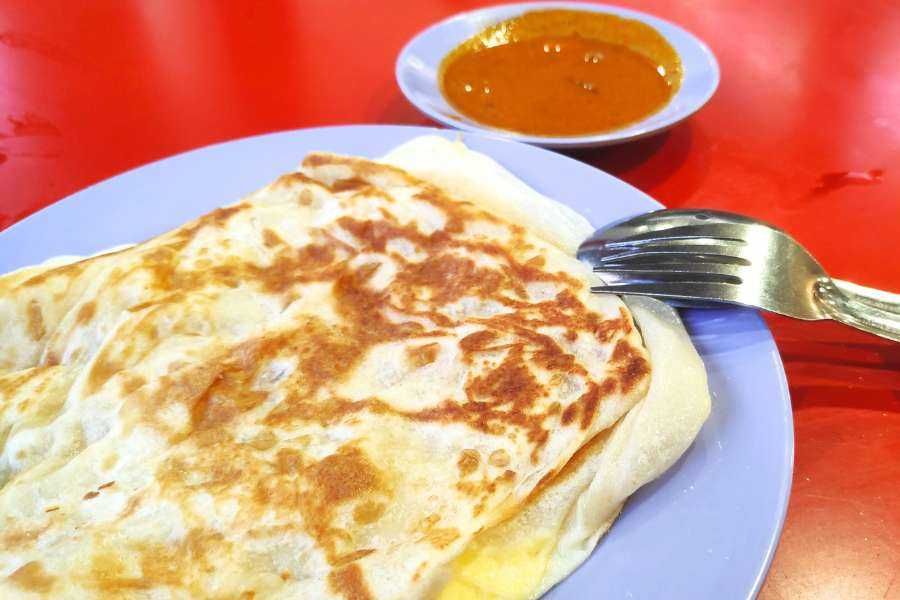
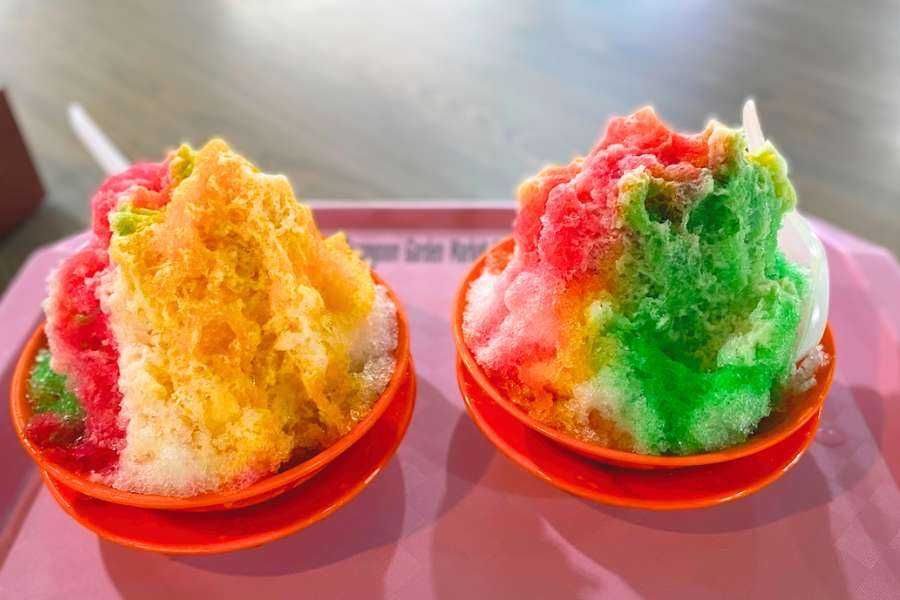
To beat the heat, try ice kachang, a local cold and refreshing dessert. Its appeal lies in its simplicity. In the commonly served ice kachang, you get a mountain of shaved ice decorated with gula melaka (palm sugar) sauce, evaporated milk, and sweet corn. Additionally, underneath it, you can find red beans, longan, chin chow (grass jelly), jelly, and attap seed (palm seed). This sweet and milky dessert bursts into flavors with every bite, offering a delightful mix of different toppings. The gula melaka sauce adds earthiness and a hint of savory notes from the evaporated milk. This dessert melts fast in the heat of Singapore, so be sure to finish it before it turns into a delightful puddle. It's like finding a pot of gold at the end of the rainbow by eating your way down through the colored ice to discover all the goodies.

